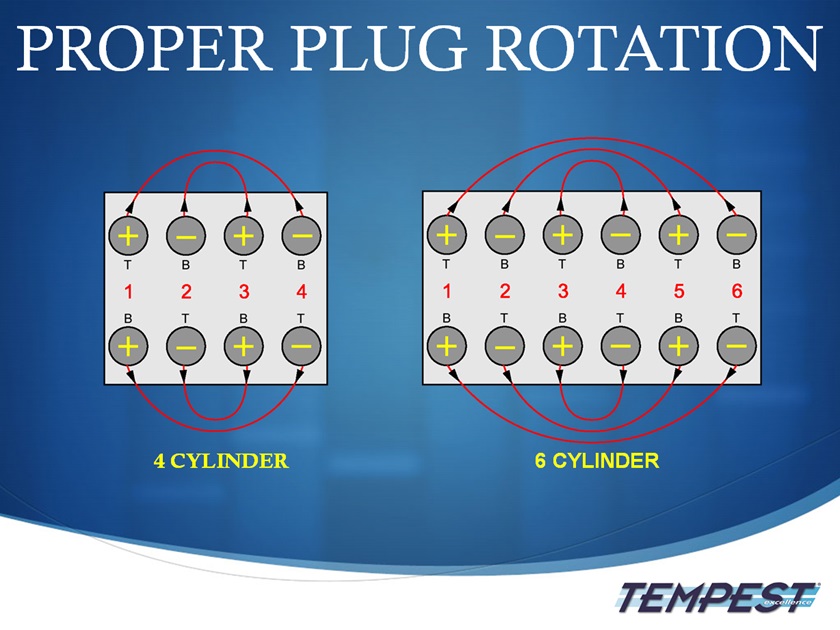Aircraft Maintenance: Become a spark plug guru
Your spark plugs work hard in a forbidding environment. Choose them wisely to maximize engine efficiency and reliability.

The average spark plug fires 8 million times during 100 hours of flight. It is built to withstand temperatures of 4,000 degrees Fahrenheit, pressures of 2,000 psi, and 24,000 volts. The function of a spark plug is obviously critical. You have options, starting with the manufacturer. Both Tempest and Champion make excellent products. I happen to use Tempest in my aircraft. From the start, Tempest has used a very reliable one-piece resistor design and I love the nickel finish that looks great year after year.
When choosing a spark plug for your engine, the approved options can be found in the aircraft and engine maintenance manuals. The plug part numbers can be easily decoded to explain the application in your engine. For example:
Part Number: URHB32E
Translates to:
U – Manufacturer (Tempest)
R – Resistor Plug
H – Barrel Size (E = 5/8”, H = ¾”)
B –Thread Reach (B = 13/16”, M = ½”)
32 – Heat Rating (Low number = cold, High number = hot)
E – Electrode Design (E = Massive, BY = Massive Projected Nose, S = Fine Wire)
Plugs that are running too cold (below 1,000 degrees Fahrenheit) will be prone to cold fouling. Cold fouling presents as deposits that are light tan (lead) and sooty-looking material (carbon). On the other end of the spectrum, plugs that are running too hot (above 1,200 degrees Fahrenheit) will present with a glossy black build-up of lead, carbon, or oil deposits.
Your final choice in plug design pertains to the electrodes. The most common plug design is the traditional, massive electrode plug. However, projected core nose plugs that look similar to automotive plugs are also available that can help alleviate lead fouling issues. Moving to a premium, fine-wire plug reduces fouling, improves engine starts/smoothness, and extends plug life by three to four times. Fine-wire plugs are an excellent choice for high-performance engines.
Spark plug maintenance entails simple cleaning and rotation on an annual or 100-hour schedule. Cleaning should be done carefully with a manual pick or vibrator cleaner to remove lead deposits and Hoppe’s No. 9 solvent. Bead blast cleaners are only to be used on massive plugs and should be used very sparingly. Never use sand or glass silicon media in a bead blaster on plugs and never use a grinder with a wire brush. Both of these can result in contamination that can cause conductive shorting that will destroy the plug. If you must use a blaster, use crushed walnuts or “Black Diamond” media from Aircraft Tool Supply.
One last check should be to verify that the resistance of the plugs is below 5,000 Ohms. Once a plug’s resistance gets higher than that, it’s time for a new plug. And remember the old spark plug adage: “Drop it Once, Drop it Twice” (the second drop is in the trash). Once a plug has been dropped on the floor, there is no way to tell if the ceramic has been compromised. You simply have to replace the plug.
The plugs should be rotated when reinstalled. This balances the electrode wear so that the plug center electrode and side electrodes wear evenly, prolonging the life of the plug.
Finally, always install the plugs with new gaskets and a light coating of non-conductive anti-seize, avoiding coating the first two to three threads. This ensures that anti-seize does not get into the combustion chamber.
Proper spark plug maintenance practices can dramatically improve the reliability of your ignition system. However, it’s important to remember that one of your most powerful tools to keep your plugs healthy lies in your hand on every flight: the mixture control. Lean aggressively on the ground to avoid cold fouling and follow the aircraft manufacturer’s leaning recommendations during flight as well. You’ll save money on both maintenance and fuel in the process. Until next time…Happy Flying!


